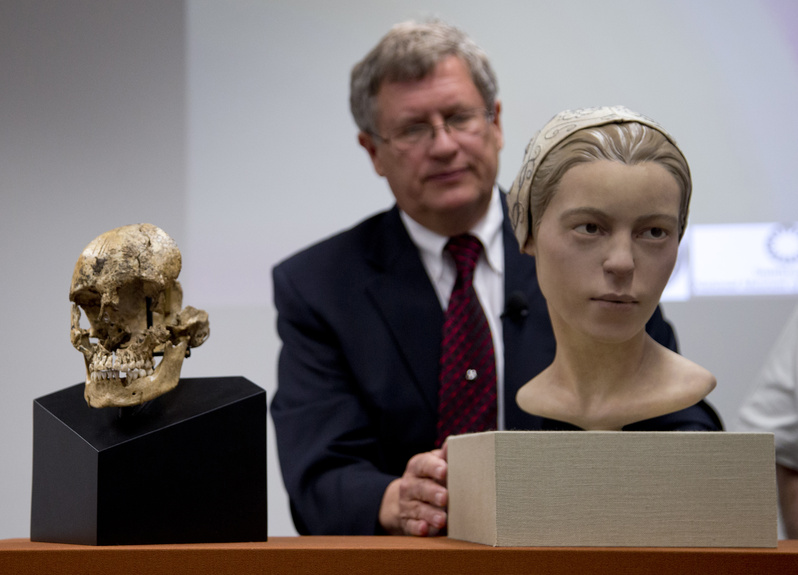NEWPORT NEWS, Va. — Archaeologists and forensic scientists working with human remains recovered at Jamestown last summer reported Wednesday that their follow-up studies have turned up gruesome evidence of cannibalism that took place during the Starving Time of 1609-10.
Analyzing the skull of a 14-year-old girl found in a refuse pit filled with butchered horse and dog bones, they discovered multiple evidence of sharp cuts and chopping blows aimed at the cranium, cheeks and mandible.
The location and number of the marks are consistent with the flesh and brain being removed, probably for consumption.
“This person did not know how to butcher an animal. What we see is hesitancy and lack of experience,” said forensic anthropologist Douglas Owsley of the Smithsonian Institution’s National Museum of Natural History.
“But they were clearly interested in the cheek meat, the muscles of the throat and tongue and the brain,” he said.
Of about 300 English settlers living at James Fort in the winter of 1608, only about 60 survived to the spring.
Numerous accounts of cannibalism among the survivors surfaced soon afterward and have been debated by historians for years.
But the discovery of the butchered skull – combined with the context of other butchered animal bones in which it was found – provides the first physical evidence of the starving colonists’ desperate efforts to stay alive.
“How many were cannibalized is unknown,” said historian and vice president James Horn of Colonial Williamsburg.
“But we don’t believe this young woman was a lone case.”
“We’re calling her ‘Jane,’ ” Horn added.
“We wanted to give her a name.”
Send questions/comments to the editors.


